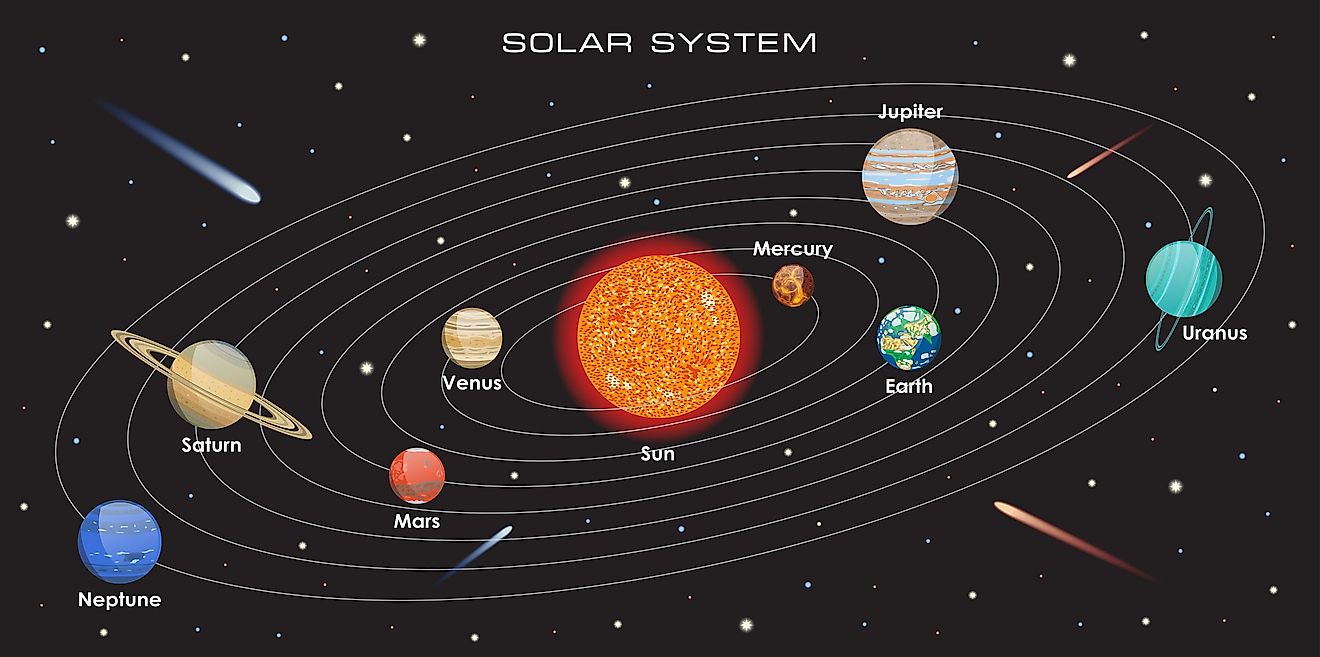Unraveling the Cosmic Enigma: Our Solar System's Astonishing Secrets

"Unraveling the Cosmic Enigma: Our Solar System's Astonishing Secrets"
In the grand theater of the cosmos, our Solar System stands as a testament to the wondrous and often perplexing laws of physics. It is a realm where mass, motion, and matter engage in a celestial ballet that defies the boundaries of conventional wisdom. At its heart, a single star, our Sun, commands an overwhelming 99.85% of the system's total mass, a staggering figure that underscores its gravitational dominance and the central role it plays in the cosmic dance.
Beyond the Sun's luminous embrace, the Solar System reveals a tapestry of celestial bodies, each with its own story and significance. The Kuiper Belt, a distant circumstellar disc, is home to a multitude of icy bodies and dwarf planets, including the enigmatic Pluto. These Kuiperian dwarfs patrol the outer reaches of our cosmic neighborhood, offering tantalizing clues about the early solar nebula from which our system was born.
The planets themselves are a study in contrasts and curiosities. From the scorched surface of Mercury, where temperatures swing wildly from searing heat to frigid cold, to the gas giants like Jupiter, whose swirling storms and immense magnetic fields captivate and confound, each planet presents its own set of mysteries. Saturn's rings, a shimmering halo of ice and rock, continue to intrigue scientists, as do the methane seas of Titan, Saturn's largest moon.
Mars, the Red Planet, has long been a focal point of human fascination and scientific inquiry. Its dusty landscapes and towering volcanoes speak of a tumultuous geological past, while recent discoveries of water ice beneath its surface fuel speculation about the potential for life.
The Solar System's smaller constituents, such as asteroids and comets, also play pivotal roles in our understanding of cosmic history. These remnants from the Solar System's formation are like time capsules, preserving the primordial material from which planets and moons were crafted. Their trajectories and compositions provide invaluable insights into the dynamic processes that shaped our planetary neighborhood.
In this cosmic laboratory, where paradoxes abound and intuition is often challenged, the Solar System invites us to ponder the fundamental questions of existence. It is a place where scientific exploration meets the boundless curiosity of the human spirit, driving us to seek answers and uncover the secrets of the universe.
As we continue to explore and study our celestial home, each discovery adds a new layer to our understanding, revealing the intricate and interconnected nature of the cosmos. The Solar System is not merely a collection of planets and moons; it is a living, breathing entity, a testament to the beauty and complexity of the universe.
🔮 Fortellr Predicts
Confidence: 85%
The discovery of 3I/ATLAS, the interstellar object, marks an extraordinary milestone in both astronomical and technological realms. This event will lead to an immediate surge in scientific interest and funding targeted toward understanding more about the object's composition, trajectory, and origins. Scientists across institutions will likely collaborate intensively to utilize available telescopes, including Hubble and the James Webb Space Telescope, to study 3I/ATLAS’s characteristics in-depth. This discovery will bolster citizen science initiatives, reflecting the significant role amateur astronomers played in detecting the object. As government agencies, private space companies, and academic institutions ramp up observational and modeling efforts, this will likely lead to robust advancements in technology aimed at capturing more detailed data on interstellar visitors. Over time, the information gathered from 3I/ATLAS can redefine our understanding of the formation of other star systems and possibly detect chemical compositions that suggest biological materials. Moreover, the expanding interest and substantial investments in space exploration induced by this discovery are expected to drive economic growth in the aerospace sector. While there is substantial momentum in scientific and economic realms, potential risks such as overspending or unmet high expectations also present challenges that could moderate future investment enthusiasm.